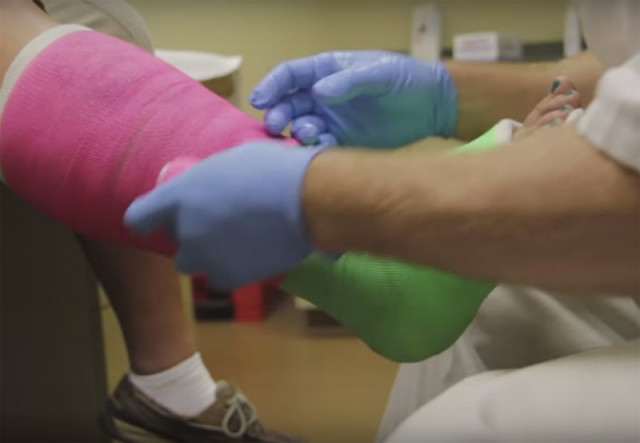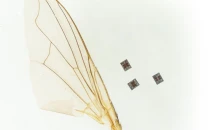Synthetic 3D-printed material helps bones regrow
When implanted into experimental animals, HB quickly integrated with the surrounding tissue

Human trials using the biomaterial, called Hyper-Elastic Bone (HB), could begin in the next five years. PHOTO COURTESY: Science Magazine
"We knew this material had great mechanical properties and it was very easy and rapid to 3D print," said study author Adam Jakus, a researcher at Northwestern University, during a conference call with reporters. "Its biological effects in the outcomes we observed directly were quite astounding."
Modernisation: ‘3D printing must for industrial progress’
The material is "made mostly of a ceramic, which contains mineral found in teeth and bones, and polymer, both of which are used in the clinic," said the study in Science Translational Medicine. Unlike bone grafts, which are more costly, more brittle and risk being rejected in the patient's body, the biomaterial could be printed into many shapes and cut, folded, and sutured to fit on demand, according to the report.
 Cross-section of a 3D-printed adult human femur Photo: Northwestern University
Cross-section of a 3D-printed adult human femur Photo: Northwestern University"When implanted into experimental animals, HB quickly integrated with the surrounding tissue, regenerating bone to promote spinal fusion in rats," said the study. A larger piece was printed to fill a hole in a rhesus macaque's skull. It healed after four weeks, with no signs of infection or other side effects, and researchers were able to see evidence of new bone growth.
Bioniks provides 'Iron Man' arm to Pakistani child
"This work represents what could be the next breakthrough in orthopedic, cranial facial and pediatric surgery when it comes to repairing and regenerating bone in bone to soft tissue defects," said study author Ramille Shah, assistant professor at Northwestern University. Researchers hope the material will one day offer personalized implants for a range of bone injuries, including spine, dental, reconstructive, and bone cancer surgeries. "There's a lot of pediatric patients who are born, especially in Third World countries, with orthopedic or maxillofacial defects," said Shah.
 Human trials using the biomaterial, called Hyper-Elastic Bone (HB), could begin in the next five years PHOTO: SCREENGRAB
Human trials using the biomaterial, called Hyper-Elastic Bone (HB), could begin in the next five years PHOTO: SCREENGRAB"And we hope that because the Hyper-Elastic Bone is scalable and at a lower cost, that it would be accessible to those types of patients."



















COMMENTS
Comments are moderated and generally will be posted if they are on-topic and not abusive.
For more information, please see our Comments FAQ